On the Noodle Road From Beijing to Rome, with Love and Pasta
A food writer travels the Silk Road, immersing herself in a moveable feast of foods and cultures and discovering some surprising truths about commitment, independence, and love.
Feasting her way through an Italian honeymoon, Jen Lin-Liu was struck by culinary echoes of the delicacies she ate and cooked back in China, where she’d lived for more than a decade. Who really invented the noodle? she wondered, like many before her. But also: How had food and culture moved along the Silk Road, the ancient trade route linking Asia to Europe—and what could still be felt of those long-ago migrations? With her new husband’s blessing, she set out to discover the connections, both historical and personal, eating a path through western China and on into Central Asia, Iran, Turkey, and across the Mediterranean.
The journey takes Lin-Liu into the private kitchens where the headscarves come off and women not only knead and simmer but also confess and confide. The thin rounds of dough stuffed with meat that are dumplings in Beijing evolve into manti in Turkey—their tiny size the measure of a bride’s worth—and end as tortellini in Italy. And as she stirs and samples, listening to the women talk about their lives and longings, Lin-Liu gains a new appreciation of her own marriage, learning to savor the sweetness of love freely chosen.
 Born in Chicago and raised in Southern California, Jen Lin-Liu attended Columbia University and went to China as a Fulbright fellow. The founder of Black Sesame Kitchen, a Beijing cooking school, she is the author of Serve the People: A Stir-Fried Journey Through China. She has written about food, culture, and travel for The New York Times, The Wall Street Journal, Saveur, Newsweek, Travel + Leisure, and other publications. She lives in Chengdu, China.
Born in Chicago and raised in Southern California, Jen Lin-Liu attended Columbia University and went to China as a Fulbright fellow. The founder of Black Sesame Kitchen, a Beijing cooking school, she is the author of Serve the People: A Stir-Fried Journey Through China. She has written about food, culture, and travel for The New York Times, The Wall Street Journal, Saveur, Newsweek, Travel + Leisure, and other publications. She lives in Chengdu, China.
Retracing a 7000 mile historic trade route took Jen Lin-Liu, back in time, across three continents and into numerous cultures. The inspiration for her epic journey…noodles. She wanted to trace the paths that food and cultures migrated and merged. The result of her travels the the terrific On The Noodle Road. Jen Lin-Liu recently answered some of our questions about her book, her trip and her cooking school.
Given the length of time and the distance that your trip encompassed was it difficult to actually sit down and write the book?
I was very glad to stop moving once the journey was over, but yes, the process of sitting down, going through my notes, and focusing on telling only the most important moments of the trip was very difficult. So much happened on the journey and I met so many wonderful people but I couldn’t include every experience I had. In some way, the book is a telling of the “greatest hit” moments of a 7,000 mile journey from Beijing to Rome.
Can you tell us a little about the research that you did preparing for the trip.
I was fortunate that the year before the journey, my husband was on fellowship in Cambridge, Mass and we lived down the street from the Schlesinger Library at Harvard, which has one of the biggest collection of food books in the world. It was there that I discovered that the story of Marco Polo bringing pasta from China to Italy was untrue and was actually a story made up in 1929 by a U.S. pasta manufacturers trade journal called the Macaroni Journal. I also came across many theories about the origin of noodles that pointed to various places along the Silk Road. I formed the idea for my journey while I was in Cambridge.
You seemed to have carefully researched you route, but was there anything really that took you by surprise?
Plenty took me by surprise, but the biggest surprise was that the hospitality was overwhelming. My initial thought was that it might be difficult to travel through many of the places I was going to because they were Muslim and I was a woman, but fortunately my husband joined me for much of the journey and the treatment we got everywhere was only warm, generous, and bend-over-backwards friendly. One day we showed up unannounced in a small village in eastern Turkey. It was at the tail end of winter, which meant that there wasn’t a lot of fresh produce or products like cheese or honey, which the village was known for. But yet, we were invited into the home of an imam and he treated us to an amazing spread of chicken stew, Turkish omelets, bread, cheese, honey, and a dessert of helva, a nougat-like candy.
Have you come across any new dishes since your trip?
Since the journey, I’ve relocated to Chengdu, China, where there are many novel dishes. They love rabbit meat here, so I’ve tried many new rabbit dishes like roast rabbit head and cold sliced rabbit meat in spicy chili sauce.
Any advice to others who thinking about doing a similar trip?
Go for it. It was the experience of a lifetime. Plan far ahead, expect setbacks and hiccups, and enjoy every moment of it.
Can you tell us a little about Black Sesame Kitchen?
I set up Black Sesame Kitchen after I finished writing my first book, Serve the People, about my experiences learning how to cook in China. After I wrote the book, many of my friends in Beijing were interested in learning how to cook, too, so I started going to my friends’ homes with chefs I had met on my journey and teaching them how to cook. The school grew organically out of that – when the demand grew, I found a small space in my historic Beijing neighborhood and turned it into a cooking school. It’s been running since 2008 and I am thrilled that it’s thriving and in the hands of a wonderful staff.
Are there any updates on the 4000-year-old noodle?
What was interesting was the story wasn’t really picked up in China until after it became a big story overseas. The Chinese at first didn’t think of the discovery as a noodle because noodles in China must be made of flour, and this noodle was millet.
What are you working on now?
I’m helping Black Sesame Kitchen develop culinary tours around China and the Silk Road. I want people to be able to enjoy all the food pleasures I experienced on my journey. And someday, I hope to open a cooking school dedicated to pasta, but that’s a long way off.
In Beijing, the sounds of the huton greeted me. Saws whirred loudly and hammers banged as, in a sign of Beijing’s new wealth, workers renovated dilapidated courtyard homes to their previous splendor. The alley echoed with kids squealing and the shuffle of mahjong tiles. Vendors bicycled through, calling out their wares. “Mai-cai-yah! Buy your vegetables!” a woman shouted with the pipes of a Mongolian throat singer, pulling a wagon of produce behind her bicycle. “Da mi! Da mi! Bai mian fen!” another vendor called, hauling a load of rice and white flour. Every so often, a knife sharpener rode through, rattling metal against a board to create a rhythmic clanging as he belted, “Mo dao! Mo dao!”
One vendor’s call—a deep, muffled murmur—had befuddled me for years. Finally one day, I stopped him and peered into a crate he’d strapped to the back of his bicycle. Tucked inside a white sheet were sheep’s heads, a specialty of the Hui, an ethnic minority. The vendor looked no different from the average Beijinger, aside from his white Muslim cap, called a doppi. Islam had arrived in China along the Silk Road more than a thousand years before, converting many Chinese in its path. The Hui were common in Beijing, and, in fact, they and other Muslim minorities had profoundly influenced the capital’s cuisine. The Muslim dishes I tasted in Beijing foreshadowed those I’d come across farther along the route. Heads aside, lamb and mutton were everywhere: diners ate thinly sliced tenderloin of sheep simmered in cauldrons, in a dish called hot pot that some believed had Mongolian origins; street vendors roasted skewers of lamb flecked with cumin and chili powder until even the bits of fat were crisp and tasty; dumplings were stuffed with lamb just as often as pork. At the corner shops, smooth, creamy yogurt came in ceramic jars etched with Arabic lettering, defying the stereotype that Chinese disliked dairy. Our neighborhood even boasted a shop that sold “imperial cheese.” The snack, more like a dessert custard than an American or European cheese, had been introduced during the Mongolian reign of Genghis Khan, it was rumored. The so-called cheese was so popular that a line stretched out the shop’s door and far into the alley every day. I’d noticed all of these details earlier in my time in China, struck by how un-Chinese they seemed. But I’d filed them away, along with those various noodle shapes, and only now that I’d returned to Beijing did I begin to think about how they were linked.
In Beijing, I also began planning my route. The tangle of paths that made up the Silk Road offered endless permutations. I pored over maps for days. Some paths had obvious hazards. I knew, for example, that I wanted to steer clear of Afghanistan, where the American-led war raged on, and Pakistan, which seemed to have little grip on terrorism (during my journey, U.S. forces would covertly enter Pakistan and kill Osama Bin Laden). On the other hand, safe Azerbaijan seemed lackluster in comparison to its neighbor Iran, with its intriguing history—culinary and otherwise.
After much deliberation, carefully weighing my culinary aims against the potential dangers, I decided I would move west through China’s minority-filled regions before crossing into Central Asia via a trio of “stans”: Kyrgyzstan, Uzbekistan, and Turkmenistan. Provided I could get a visa, I would then push on through the deserts of Iran before traveling through Turkey’s diverse landscape. Once I reached the Mediterranean, I would take a boat to Italy. Since the entire journey would require more than six months, I had to budget carefully. Thankfully, the Silk Road offered few expensive hotels, but I also knew I couldn’t go back to the days of sleeping in communal barracks in youth hostels. I would mostly ride buses and trains, reserving hired cars for the most treacherous parts of my trip.
The path I’d chosen had some risks. Over the previous couple of years, Tibetans and Uighurs in western China, discontent with the government, had launched a string of riots, some deadly. Uzbekistan and Turkmenistan were two of the world’s most despotic states. Iran, controlled by a strict ayatollah and an ultraconservative president, Mahmoud Ahmadinejad, was notoriously hostile to America and Americans. Although Turkey was tourist-friendly, conservative Islamists were gaining power and its Kurdish population was growing restive. Few of the countries I would visit were friendly to journalists; Turkey imprisoned more reporters every year than did any other country in the world, Iran was the runner-up, and China came in third place. I had to remind myself that even though I’d navigated the People’s Republic as a writer for years, the government still ruled with a heavy hand—especially in the country’s west.
The trip would be daunting in other ways. All the expertise I’d acquired in China would be of little use in Central Asia and the Middle East. I’d assumed at first that the Silk Road would take me through the Arab world, but it turned out that it ran mostly through places inhabited by Turkic people and Persians, who, while largely Muslim, didn’t consider themselves Arab. And I’d never spent much time in Muslim areas, aside from jaunts to China’s western hinterlands and a couple of Southeast Asian islands. I also worried about my identity, which caused me enough headaches in China and America. In the Muslim world, how would they receive a Chinese-American? Perhaps it would be wise to say I was something other than American, but would it be prudent to lie? And anyway, I didn’t wish to be anything else. As for being a woman, I knew in certain places like Iran, I would have to cover myself from head to toe.
While I contemplated all of this, Craig proposed a plan that would involve him in some of the journey: He’d stay in Beijing while I traveled through China but would join me before I crossed its western border. We would travel through Central Asia and Iran together—places that were less familiar and potentially more dangerous. He wasn’t sure about Turkey and definitely didn’t want to go back to Italy—he’d had enough four-hour-long meals to last him a lifetime.
My husband was the only person I knew who could make going to Italy sound like torture, I thought with a grumble. Plenty of partners would have jumped at the opportunity to take such a trip! Couldn’t he just come along and be grateful for the experience? But another part of me understood he wasn’t so keen on more China travel, having spent so many years there, and beyond that, he just wasn’t excited about tagging along. It was generous of him to want to come on parts of the trip for my benefit. And the prospect of having some time together was enticing. But then again, what if he was only coming for my safety? Wasn’t that patronizing? Did he believe I lacked common sense, that I couldn’t hack it without him?
I pushed the questions to the back of my head as I went on with my preparations, visiting embassies in Beijing for my visas. I read up on the countries I’d visit. I browsed cookbooks, my mouth watering in anticipation of ashlyanfu noodles in Central Asia and fesenjun stew in Iran.
Excerpted from ON THE NOODLE ROAD by Jen Lin-Liu by arrangement with Riverhead Books, a member of Penguin Group (USA), Inc., Copyright © 2013 by Jen Lin-Liu


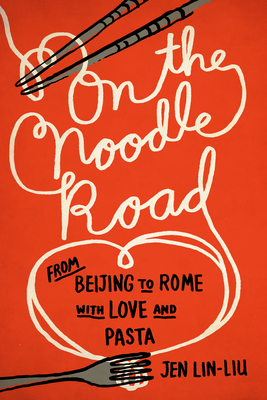


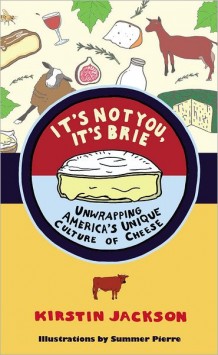
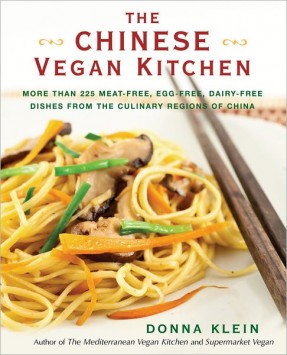
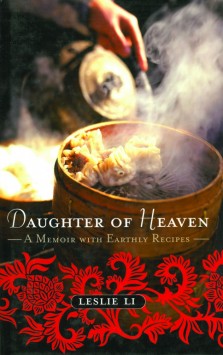
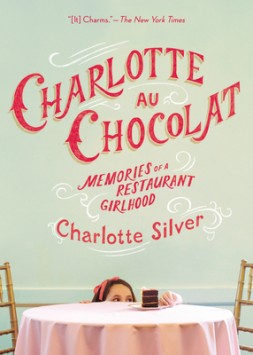
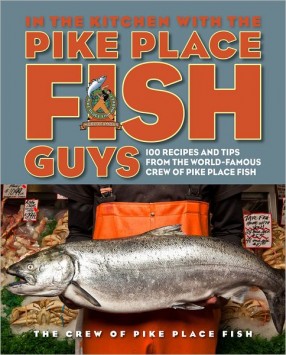
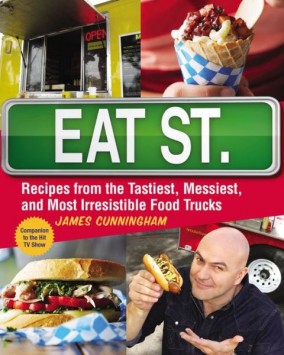
Leave a Reply